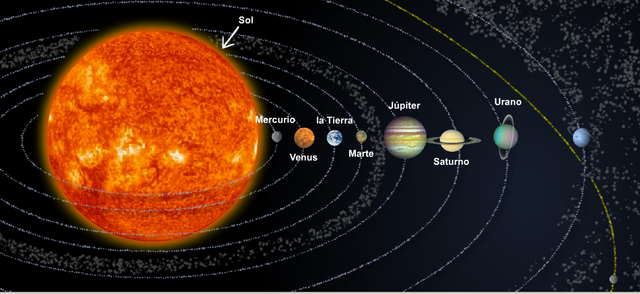Why it is difficult to reach the Sun
In the history of mankind no human or animal have being able to touch or reach the sun, this may sound somehow due the fact that there have been researches made over the years which made it possible for scientists to get to the moon, mars. Take NASA for instance despite all their researches they have not being able to get to the sun, though recently they successfully launched the Parker Solar Probe, the first spacecraft that will ever touch, with its own instruments, solar material directly in the vicinity of the Sun itself. It’s the strongest gravitational source around for many light years in every direction, and everything in the Solar System. Why do you think this has been very difficult to achieve? The Newton first law of motion? Yeah! You are right.
Newton first law of motion which states that a body or an object remains at rest, a body or an object remains in constant motion, unless acted upon by an external or outside force. Nothing has ever been launched from Earth, be it naturally or artificially, has ever come in contact with the Sun. The Parker Solar Probe will absolutely be the first.
In view of this when you push-or-pull something and it accelerates; take all the external forces away and it remains in constant motion. There is another kind of motion that can be likened with this i.e. angular or rotational motion also in the case of anything originating on Earth, that includes our motion around the Sun. While the Parker Solar Probe may be designed to measure many aspects of the Sun, we have to get much closer than we’ve ever gone before, and that means changing our angular motion.

Newton’s first law of motion, for straight-line motions, tells us that momentum is always conserved, and the only way to change that momentum is to have an external force. For orbital-type motions, then, it tells us that angular momentum is always conserved, and the only way to change it is to have an external torque, which is a force acting to change that rotational motion. Whereas linear momentum is just an objects’s mass multiplied by its velocity, angular momentum is the linear momentum multiplied by that object’s orbital distance from what it’s orbiting.
For a body on Earth, which moves at a typical speed of 18.5 miles-per-second (30 km/s) in orbit around the Sun at a typical distance of 93 million miles (150 million km) from the Sun. Angular momentum can be changed within the Solar System in two ways:
-Using a gravitational assistance to accelerate/decelerate you with respect to the Sun.
-Burning some rocket fuel, causing your own acceleration (balanced by the equal-and-opposite acceleration of the fuel).
The Parker Solar Probe is being touted as the fastest object ever launched by humanity, and that’s because it has to be. Its launch pad is planet Earth, which orbits the Sun at a roughly constant 18.5 miles-per-second (30 km/s), which translates to some 67,000 mph (108,000 kph). The amount of fuel that we’d have to spend to slow that speed down so that we could fall closer to the Sun, into an interior orbit, is expensive and outrageous. For this Parker Solar Probe to work, it needs to get within a mere 6 million km of the Sun at its minimum distance, in order to touch, reach and measure the Sun’s corona i.e. a superheated region of plasma normally only visible during a total solar eclipse.
Many attempts have been made in recent years to reach both the inner and outer Solar System. The Messenger spacecraft, for instance which was launched in 2004, flew by Earth once, then gave itself a boost with a rocket burn to fly by Venus, which it did twice, then burned again to reach Mercury, and after three total Mercurian fly-bys, it entered orbit around Mercury in 2011.
Using Venus as its primary gravitational assist tool, the Parker Solar Probe will take an analogous approach . It will fly by the hottest planet in our Solar System a record seven times, in order to create an elliptical orbit that enables it to come within 3.8 million miles (6.1 million km) of the Sun. It also requires an incredibly complex, intricate plan to insert yourself into a stable orbit that’s capable of bringing you closer to the Sun than anything else ever has before.
Getting to the Sun is a remarkable technical achievement that will finally come to fruition in just a few short years. It would also be one of the biggest achievement in science of the millennium if not the biggest. The launch has been successful, and the next few years of gravity assists and a few deep-space maneuvers should bring us closer to the Sun than we’ve ever gotten before. This spacecraft has been designed to survive at least three successful touches of the Sun. This will be a remarkable achievement because it would be the first time ever something sent from the Earth is ever close to the Sun.